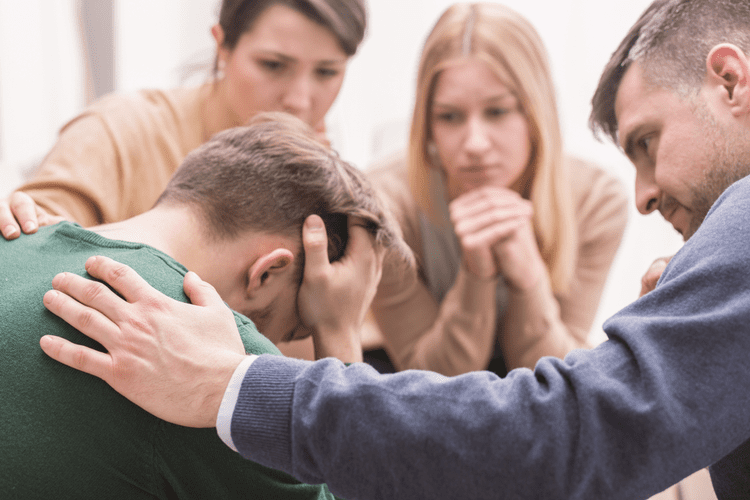The most important factor in your decision to return to rehab should always be your personal health and safety. For some people, a week or even 30 days in an intensive program is not enough to prepare them for long-term recovery. Alcohol and drug addiction is a chronic illness and requires ongoing maintenance and care. There is also no way to determine your tolerance level after weeks, months, or years of non-use. In other words, if you start using again and take a high dose of the drug, the risk of a fatal overdose increases.
At 22, I started hanging out with a group of people who gave me a sense of belonging, but they also used drugs. The latest audit of Measure 110 from the Oregon secretary of state’s office notes challenges hiring qualified health care staff to do addiction treatment work that can quickly lead to burnout. Under the law, possessing small amounts of drugs became a violation, punishable with a ticket that could be ignored without any legal consequence. As a result, law enforcement agencies said they lost leverage to search for and confiscate drugs, or even to block people from using drugs in public. At the same time, Lau encourages people living with chronic back pain to seek out new approaches if relief remains out of reach. Continued use after relapse is dangerous, deadly, and makes recovery even more complicated.
Returning To Rehab
Picking up where you left off after a relapse is an empowering step in the right direction. Studies show that more than 85% of people working towards sobriety will relapse at some point, with two-thirds of those occurring in the early weeks and months after choosing sobriety³. Although this may be an alarming statistic, it can serve as a reminder that relapse is a normal part of the recovery process.
However, relapsing can be dangerous — once you stop using and lose your tolerance, you’re more likely to experience negative side effects or overdose when you use again. If you slip and use drugs or alcohol for only a brief time – usually one day or going back to rehab less – and you realize you’ve taken a risk, rehab might not be necessary. The ballot measure also put hundreds of millions toward expanding addiction services in the state, an aspect of the law that, while slow to mature, is having positive impacts.
Can chronic back pain ever go away?
Certain studies have proven that long-term drug and alcohol treatment is much more effective than short-term care. If a person has to be in short-term care, the risk of them relapsing can be reduced by placing them in relapse prevention programs afterwards. Simply defined, relapse is the return to a https://ecosoberhouse.com/ previous situation regarding drug or alcohol use. Regardless of how long someone’s been sober, a return to substance use is a relapse. Contact a treatment provider today to find available treatment centers. Regardless of how you define these terms, a slip increases the risk of a complete relapse.

A slip may be fixable with meetings, counseling, and support, but a full-blown relapse should seriously make you consider calling a treatment center and restarting your journey into recovery. You know there’s help out there, and all you have to do is pick up a phone to get started. You don’t have to go back into addiction and suffer the way you did the first time. You’ve learned something about yourself now, the triggers, the things that may have led to the relapse.
Licenced & Certified by the State Department of Health Care Services
A “freelapse”, on the other hand, is the colloquial term for an accidental relapse that happens when a person unintentionally uses drugs or alcohol. This could happen when they mistakenly drink alcohol thinking they were being given a non-alcoholic beverage at a party. But a man or woman who is addicted to alcohol may want to enter a 12-step program instead. Some of the other treatment options that are available include partial hospitalization, inpatient and outpatient therapy, and aftercare programs. Lack of commitment to sobriety can also be a major factor in relapse. Here, we provide a thumbnail view of four stages of recovery used in many treatment programs, including, pre-contemplation, contemplation, preparation, and action.

Referencing World Health Organization guidelines published in late 2023, Findlay said treating chronic back pain requires a combination of education and rehabilitation. Treating chronic back pain therefore requires a “biopsychosocial model,” according to Findlay, referring to a model of care that links biology, psychology and social factors. The term non-specific low back pain can often be applied in circumstances where there is back discomfort, but the reason isn’t clear. While Gaudon had physically traumatized her back, Lau says many people living with chronic back pain often have nothing physically wrong with their bodies. You are learning the tools you need to achieve your goal of sobriety, and returning to rehab will strengthen the tools you have, and give you more options to choose from in your future. Going back to rehab after a relapse can be a complicated decision.